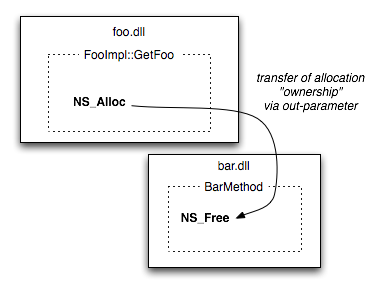Graph of the Day: Firefox Virtual Memory Plot
Thursday, April 11th, 2013I spend a lot of time making sense out of data, and so I’m going to try a new “Graph of the Day” series on this blog.
Today’s plot was created from a crash report submitted by a Firefox user and filed in bugzilla. This user had been experiencing problems where Firefox would, after some time, start drawing black boxes instead of normal content and soon after would crash. Most of the time, his crash report would contain an empty (0-byte) minidump file. In our experience, 0-byte minidumps are usually caused by low-memory conditions causing crashes. But the statistics metadata reported along with the crash show that there was lots of available memory on the system.
This piqued my interest, and fortunately, at least one of the crash reports did contain a valid minidump. Not only did this point us to a Firefox bug where we are aborting when large allocations fail, but it also gave me information about the virtual memory space of the process when it crashed.
When creating a Windows minidump, Firefox calls the MinidumpWriteDump function with the MiniDumpWithFullMemoryInfo flag. This causes the minidump to contain a MINIDUMP_MEMORY_INFO_LIST block, which includes information about every single block of memory pages in the process, the allocation base/size, the free/reserved/committed state, whether the page is private (allocated) memory or some kind of mapped/shared memory, and whether the page is readable/writable/copy-on-write/executable.
(view the plot in a new window).
There are two interesting things that I learned while creating this plot and sharing it on mozilla.dev.platform:
Virtual Memory Fragmentation
Some code is fragmenting the page space with one-page allocations. On Windows, a page is a 4k block, but page space is not allocated in one-page chunks. Instead, the minimum allocation block is 16 pages (64k). So if any code is calling VirtualAlloc with just 4k, it is wasting 16 pages of memory space. Note that this doesn’t waste memory, it only wastes VM space, so it won’t show up on any traditional metrics such as “private bytes”.
Leaking Memory Mappings
Something is leaking memory mappings. Looking at the high end of memory space (bottom of the graphical plot), hover over the large blocks of purple (committed) memory and note that there are many allocations that are roughly identical:
- Size: 0x880000
- State: MEM_COMMIT
- Protection: PAGE_READWRITE PAGE_WRITECOMBINE
- Type: MEM_MAPPED
Given the other memory statistics from the crash report, it appears that these blocks are actually all mapping the same file or piece of shared memory. And it seems likely that there is a bug somewhere in code which is mapping the same memory repeatedly (with MapViewOfFile) and forgetting to call UnmapViewOfFile when it is done.
Conclusion
We’re still working on diagnosing this problem. The user who originally reported this issue notes that if he switches his laptop to use his integrated graphics card instead of his nvidia graphics, then the problem disappears. So we suspect something in the graphics subsystem, but we’re not sure whether the problem is in Firefox accelerated drawing code, the Windows D3D libraries, or in the nvidia driver itself. We are looking at the possibility of hooking allocations functions such as VirtualAlloc and MapViewOfFile in order to find the call stack at the point of allocation to help determine exactly what code is responsible. If you have any tips or want to follow along, see bug 859955.

